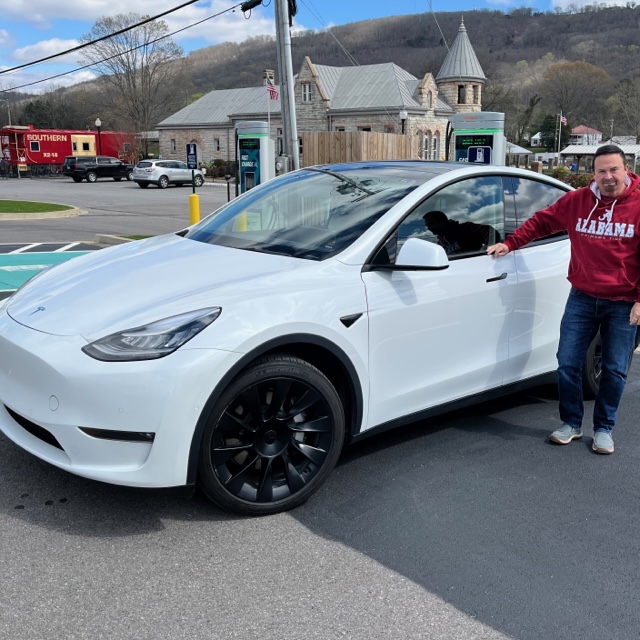BY MARLA BALLARD
REPORTER
FORT PAYNE - Jim Crowe describes himself as thrifty and says this is the
the main reason he purchased an electric vehicle and put his home on solar
power.
Crowe purchased his Tesla Model Y in 2021 and has no regrets. "In addition
to the perk of saving money I simply enjoy driving my Tesla," said Crowe.
He has taken his four-door vehicle on over a dozen 300-plus mile trips and
several trips over 400 miles.
Crowe said depending on the temperature (colder weather needs more battery
charging) he can travel anywhere from 200 to 300 miles on one charge. "My
the vehicle comes with a built-in system that alerts me well in advance when I
need to charge and shows me where to find superchargers," said Crowe. "I
also have information about the availability at the supercharger concerning
wait time."
A supercharger is what Tesla charging stations are called. With 40,000 plus
Superchargers, Tesla owns and operates the largest global, fast charging
network in the world. Most superchargers have 8 to 16 pumps per station. "In
In general, the cost of charging a Tesla is more than three times cheaper per
mile than the cost of fueling a gas-powered car," according to
Crowe said when he stops to charge his vehicle it takes about the same
amount of time he needs to purchase some snacks and use the restroom. "An
app on my phone tells me when my car is finished charging," said Crowe. "Not
all-electric cars are the same, I feel that Tesla is miles ahead of the
game. My Tesla has almost 70,000 miles and has not had a service visit yet."
Concerning power and speed motortrend.com states, "The all-electric pioneer,
Tesla has built everything from hardcore sports cars to luxury sedans, and
all have 0-60 quarter-mile time that past decades of supercars struggled to
keep up with." Depending on the model some Teslas can reach a top speed of
over 250 mph. The model Y is reported to reach a top speed of just over 150
mph.
In October, Jim and Donna converted their home into a solar-powered house.
"There have been and will be occasions when we have to rely on electricity,
such as when we have temperatures in the single-digits," said Crowe. "But
when everyone else was experiencing the rolling blackouts, we were not.
Overall, on average we use around $2 of electricity each month."
Staying aware of the amount of sunshine is all part of going off the grid.
Jim said Donna will generally use the clothes dryer more on a sunny day than
on a foggy one. There are also variables that play a role in determining how
many solar panels are needed, such as living on a shady piece of property
and the size of the home. "I have a friend whose home is actually larger
than mine, but they need fewer solar panels because their roof faces south,"
said, Crowe.
For homes in the northern hemisphere, south-facing solar panels do receive
the most direct sunlight throughout the year. However, a south-facing roof
is by no means a requirement for a productive and economically viable solar
power system.
Solar energy has become increasingly popular in the last 30 years. Makes
sense since at any given time 173,000 terawatts of energy are hitting the
earth. This is 10,000 times more power than our planet's total energy usage.





